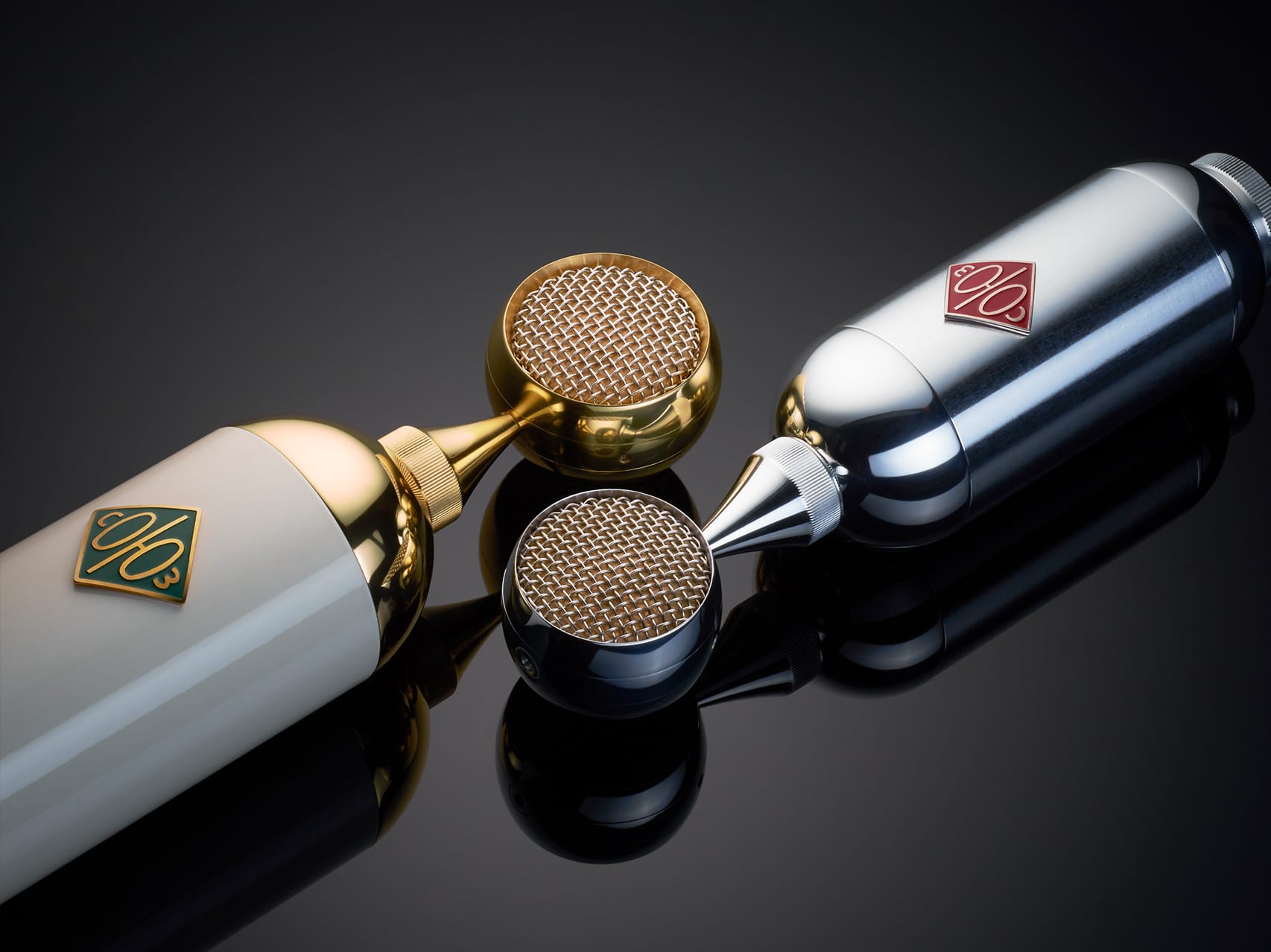When in the studio, the engineer or producer is often considered to be the “5th member” of the band. The tools you choose and the techniques you employ can infuse the recording with a rich spectrum of colors and textures. As the source audio passes through the signal chain, there are many stages at which it can be affected. Arguably the most important of these is the choice and positioning of the microphone.
Selecting a condenser mic as opposed to a dynamic or ribbon mic will give your sound an extended frequency range and increased level of detail. Depending on the results you’re trying to achieve, you can then choose between a FET or tube (also known as valve) condenser mic. In general, neither is considered to be better than the other. Each possesses its own unique characteristics that make it more (or less) applicable in different circumstances.
Customarily, tube mics are associated with warmth and roundness while FET mics are known for their fast transient response and accuracy. The difference between tube and FET mics is often compared to the difference between film and video. Each has a relevant role and purpose. This is why most Soyuz mics are available with options for both tube and FET versions.
Although the above-described attributes of tube and FET mics generally hold true, it should be noted that there are exceptions. There are some well-respected tube mics which are known for their transparency, and there are some FET mics (e.g. the Soyuz 023 BOMBLET) which are notable for their vibe and character.
When to Choose a Tube Mic
Tube mics are usually the first choice when you want to smooth out the sound of their instrument. In most instances, a tube mic will roll off some of the top-end of a source, which results in a warm tone which is pleasing to the human ear. The tube can add an element of depth and resonance that makes instruments sound larger than life. This definitely stands true for the 017 Series and 013 Series microphones in the Soyuz line.
In order to function, tube mics require a very stable source of high voltage, which is why they are generally accompanied by an external power supply unit.
In the videos below, you can compare the 017 TUBE and 017 FET on male vocals.
Listen to the 017 TUBE on Male Vocals
Listen to the 017 FET on Male Vocals
When to Choose a FET Mic
FET mics are distinguished by their unparalleled transient response. They typically capture more precise transients than tube mics, making them perfect when you’re trying to paint a more honest picture. The Soyuz FET mics were designed to provide FET precision while retaining the warmth (resonance?) of the Soyuz transformers and capsules.
In the Soyuz line, the FET mics have less output than the tube mics making them the first choice for louder sources which can overload a tube circuit. The tube mics can implement a pad to bring down the output level, but it can often be more convenient to just plug and play.
Unlike tube mics, whose heavy external power supply could make traveling with them less than optimal, FET mics can run off standard 48V phantom-power supplied with most common preamps, making them perfect for touring musicians and engineers.
In the videos below, you can compare the 013 FET on drum overheads to the 013 TUBE and hear the difference.
Listen to the 013 FET on Drum Overheads
Listen to the 013 TUBE on Drum Overheads
Which Mic Is Right For Me?
There are strong advantages to each and of course, like everything in the world of recording, which one is right for you depends on a variety of factors.
For instance, for recording drum overheads either a tube or FET mic could be the right choice, depending on your desired results. Choosing a tube mic for a heavy-handed cymbal-basher might be the perfect option to help smooth out the top end of a drum kit while a FET mic is the perfect choice to capture the articulation of a precise jazz drummer. It really is subjective and comes down to the sound that you’re trying to capture.
Consider your source, the production, and the placement of your sound and you’ll know if you need to reach for the fast snappy articulation of a FET mic or a softer roundness and smoothing of a tube.













































